Why Everyone’s Talking About Soft Long Layers? A few weeks back, a long-time client, Aisha, walked into my salon. She had beautiful, waist-length hair — but it looked tired, weighed down, and heavy. She twisted a strand between her fingers and sighed:
“I want a change, but I’m scared to lose my length. I still want my hair to feel feminine.”
I knew exactly what would bring her hair back to life: soft long layers.
Within an hour, her hair had movement, her face looked brighter, and even her posture changed. She ran her fingers through her hair, smiled into the mirror, and said, “This feels like me again.”
That’s what this cut does — it’s not just about hair; it’s about confidence.
Soft long layers have been quietly making their way from high-fashion catwalks to everyday street style. Celebrities love them because they photograph beautifully, and clients love them because they’re flattering, versatile, and low-maintenance when done right.
Table of Contents
What Are Soft Long Layers?
Soft long layers are a haircutting technique where the hair is sectioned and shaped so that the differences in length blend gradually. This avoids harsh lines or the “step” effect you sometimes see in poorly executed layers.
Key Traits of Soft Long Layers
- Movement without losing length – The ends stay long while the inner layers add shape.
- Gradual blend – No visible breaks between layers; the eye sees one fluid shape.
- Face-framing softness – Layers transition seamlessly towards the front.
How They Compare to Other Layer Cuts
- Blunt Cut: Straight edges, zero movement — polished but can look heavy.
- Choppy Layers: Textured, edgy, but less soft.
- Feathered Layers: Airy, often shorter upfront; good for volume but may sacrifice length.
Think of soft long layers as the perfect balance between structure and softness.
The Science of Why Layers Work
Here’s the logic: hair has weight and density. As it grows, that weight can pull strands straight down, making them look flat or shapeless. By strategically removing weight through layering:
- Straight hair gets lift and swing.
- Wavy hair has more defined, easy texture.
- Curly hair gets shape without the dreaded “triangle” effect.
Layers also help distribute weight so that ends don’t look bulky — especially important for thick hair.
Who Should Get Soft Long Layers?
By Hair Type
- Fine Hair: Add gentle layering below the collarbone for volume without thinning ends.
- Thick Hair: Remove excess bulk while maintaining sleek movement.
- Wavy/Curly Hair: Cut dry in natural formation to follow curl patterns.
- Straight Hair: Soft layers prevent that poker-straight, heavy look.
By Face Shape
- Oval: Can wear any variation.
- Round: Layers starting below the chin help elongate.
- Square: Soft rounded ends around the jaw soften the profile.
- Heart: Face-framing layers balance forehead and chin.
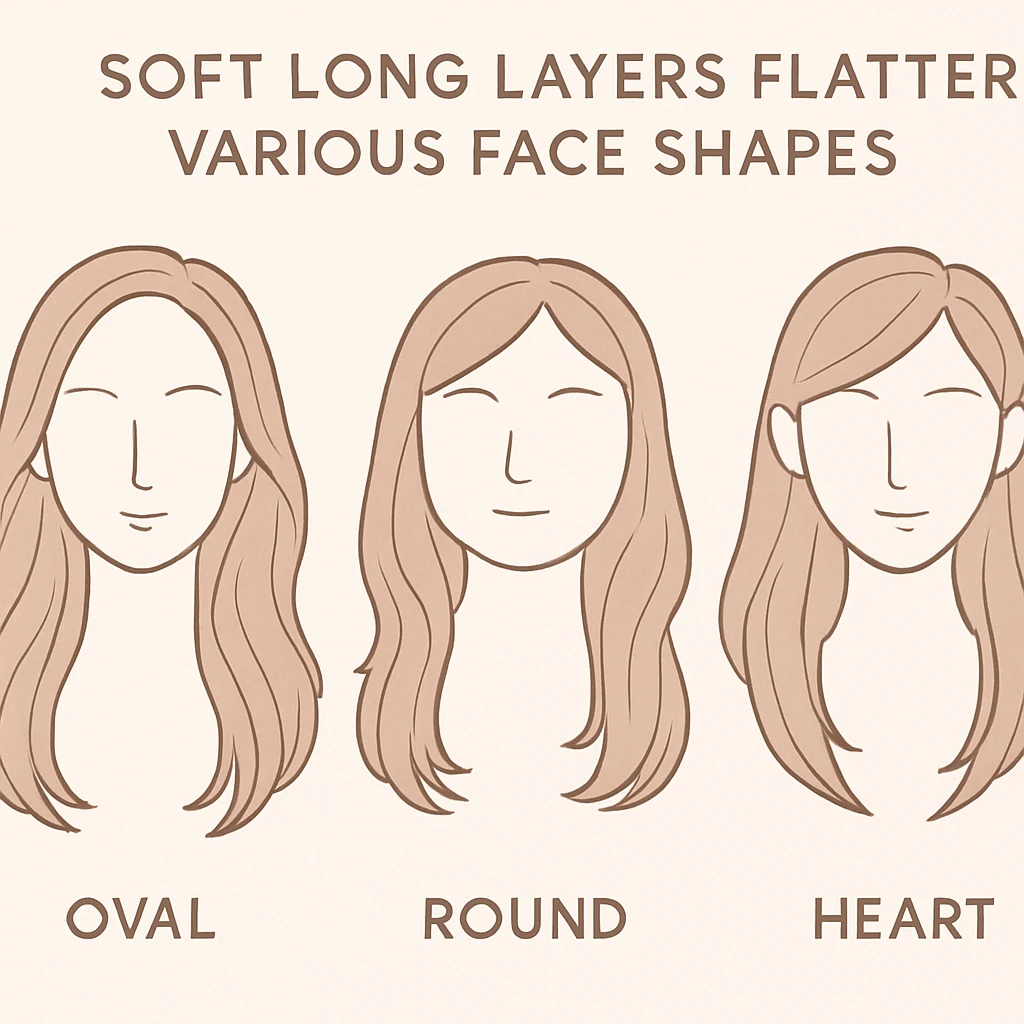
Stylist Tip: Always place the shortest face-framing point in line with your cheekbones or chin for maximum flattery.
Celebrity Inspiration
From Jennifer Aniston’s iconic 2000s layers to Priyanka Chopra’s modern romantic waves, celebrities have proved that soft long layers are timeless. Even runway shows for brands like Chanel and Valentino have been sending models down with hair that looks air-light and face-framing.
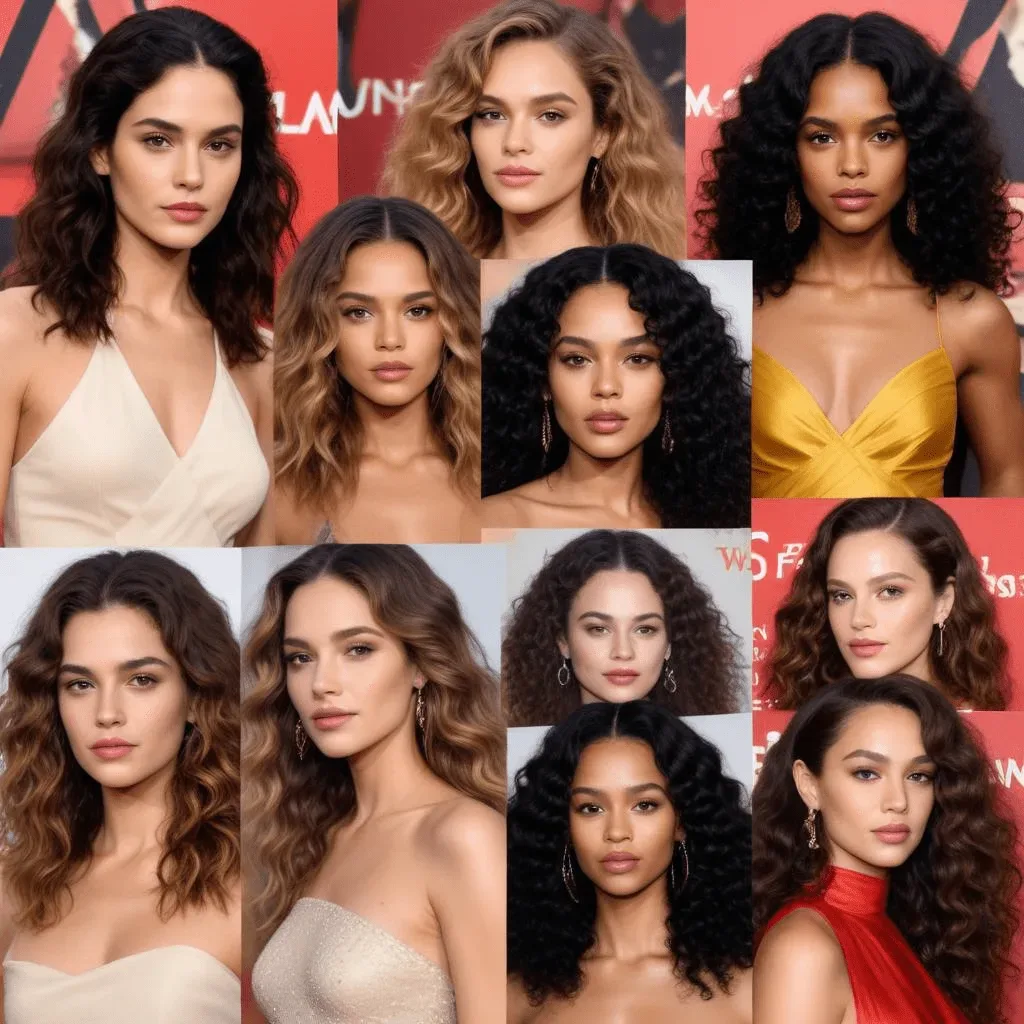
Step-by-Step: How I Cut the Perfect Soft Long Layers
- Consultation First – I ask about lifestyle, styling habits, and hair goals.
- Sectioning – Divide hair into clean sections for precision.
- Point-Cutting and Slide-Cutting – For feather-light ends that blend naturally.
- Face-Framing Layers First – Starting point determines overall shape.
- Texturizing – Only if needed, to enhance movement.
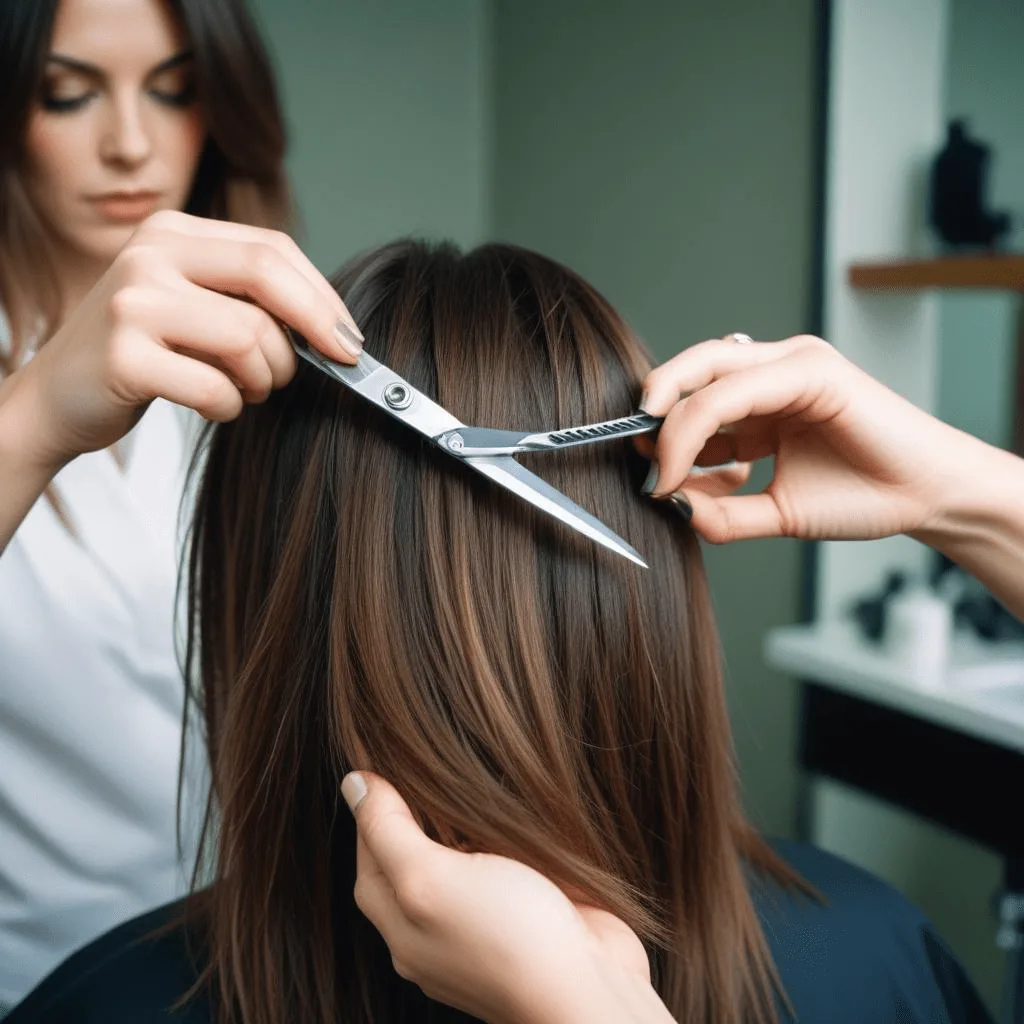
Pro note: On curly hair, these steps are reversed — curl pattern dictates the cut.
Before & After Client Stories
Aisha’s Transformation (Fine Hair)
Before: limp, heavy, stuck to her cheeks.
After: minimal layering around the crown and cheekbone-level framing = instant lift.
Maya’s Makeover (Thick Hair)
Before: overly blunt ends, no movement.
After: removed bulk starting at the shoulders, soft interior shaping — now her hair swings when she walks.
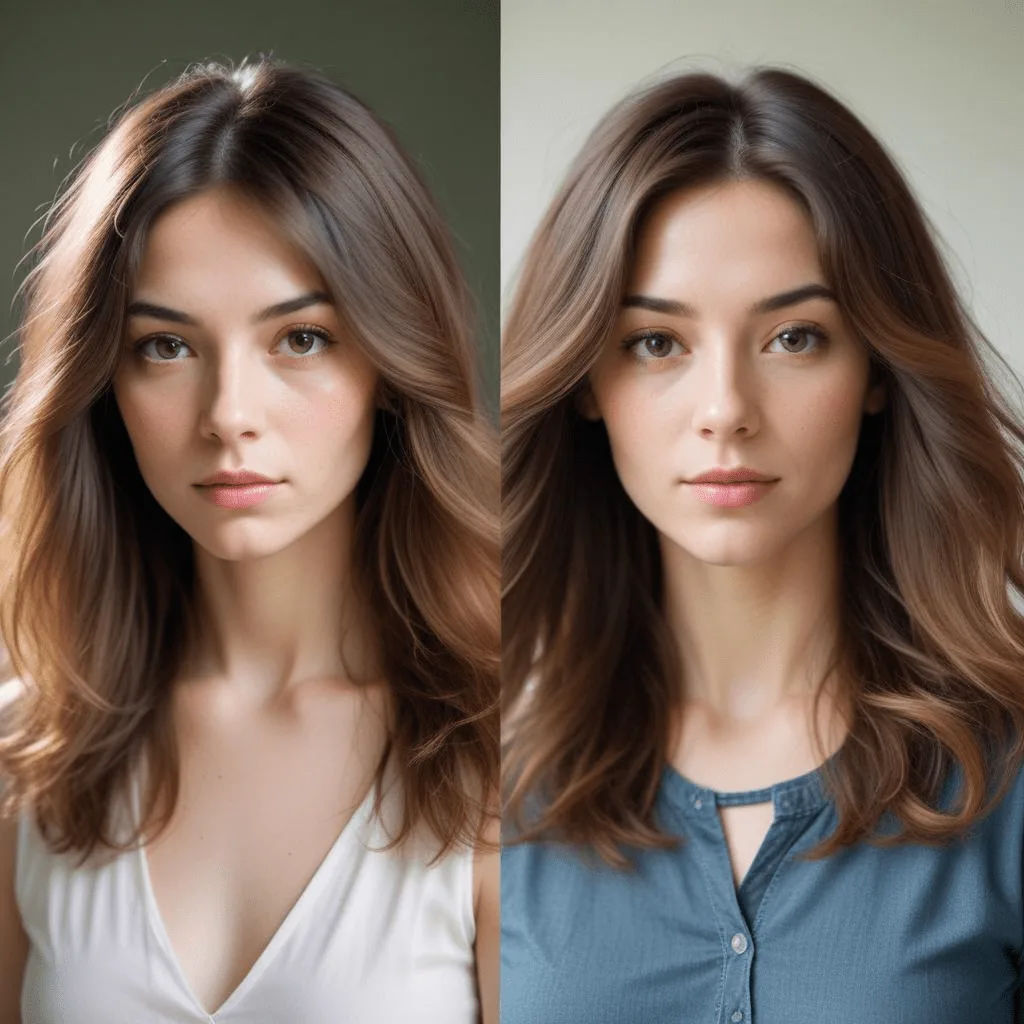
Styling & Maintenance for Soft Long Layers
At-Home Care
- Weekly hydrating mask to keep ends soft.
- A silk pillowcase to prevent frizz and broken strands.
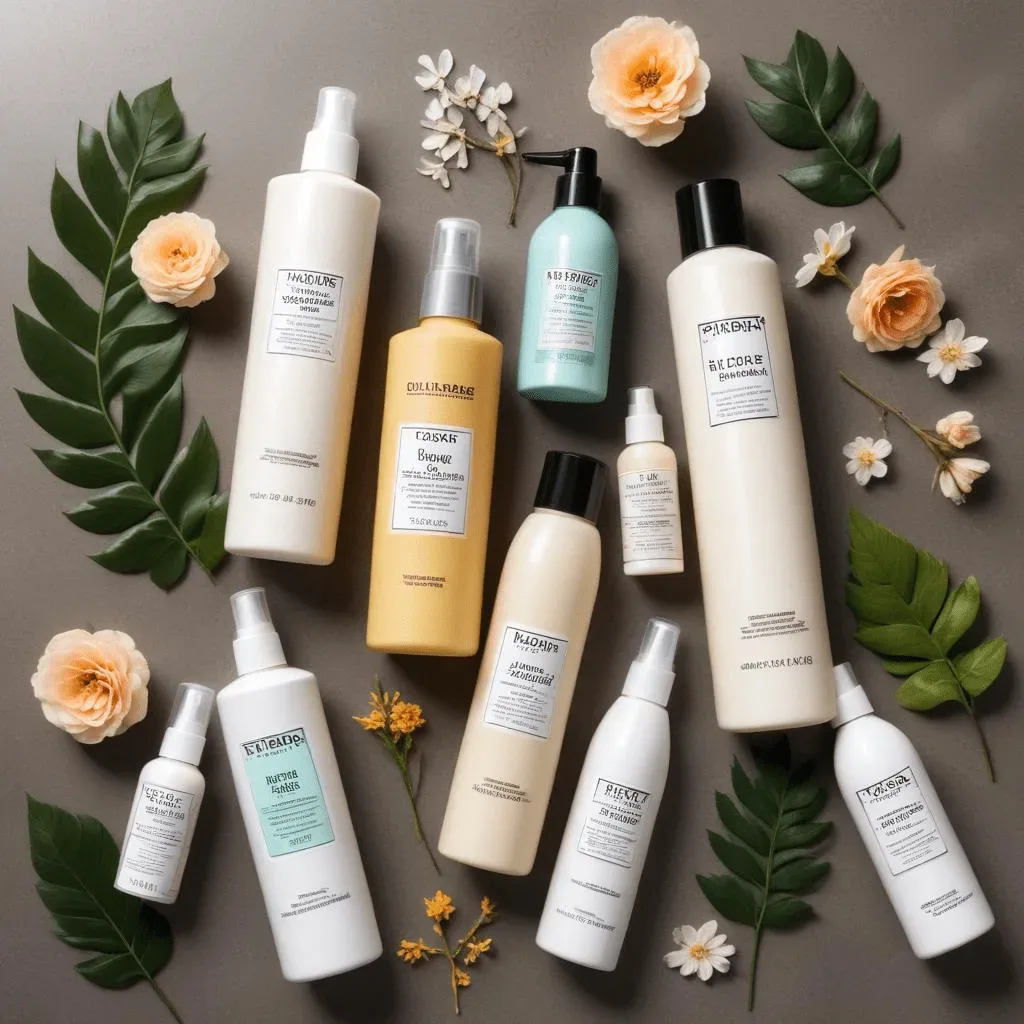
Products I Recommend
- Pureology Hydrate Sheer (lightweight moisture).
- Olaplex No.6 Bond Smoother (softness + frizz control).
- Oribe Dry Texturizing Spray (effortless movement).
Salon Maintenance
- Trim every 8–12 weeks.
- Seasonal updates — add texture in summer, keep it softer in winter.
Quick Everyday Styling Guide
5-Minute Lift for Work or School
- Flip head upside down, rough-dry.
- Smooth face-framing pieces only — leave rest natural.
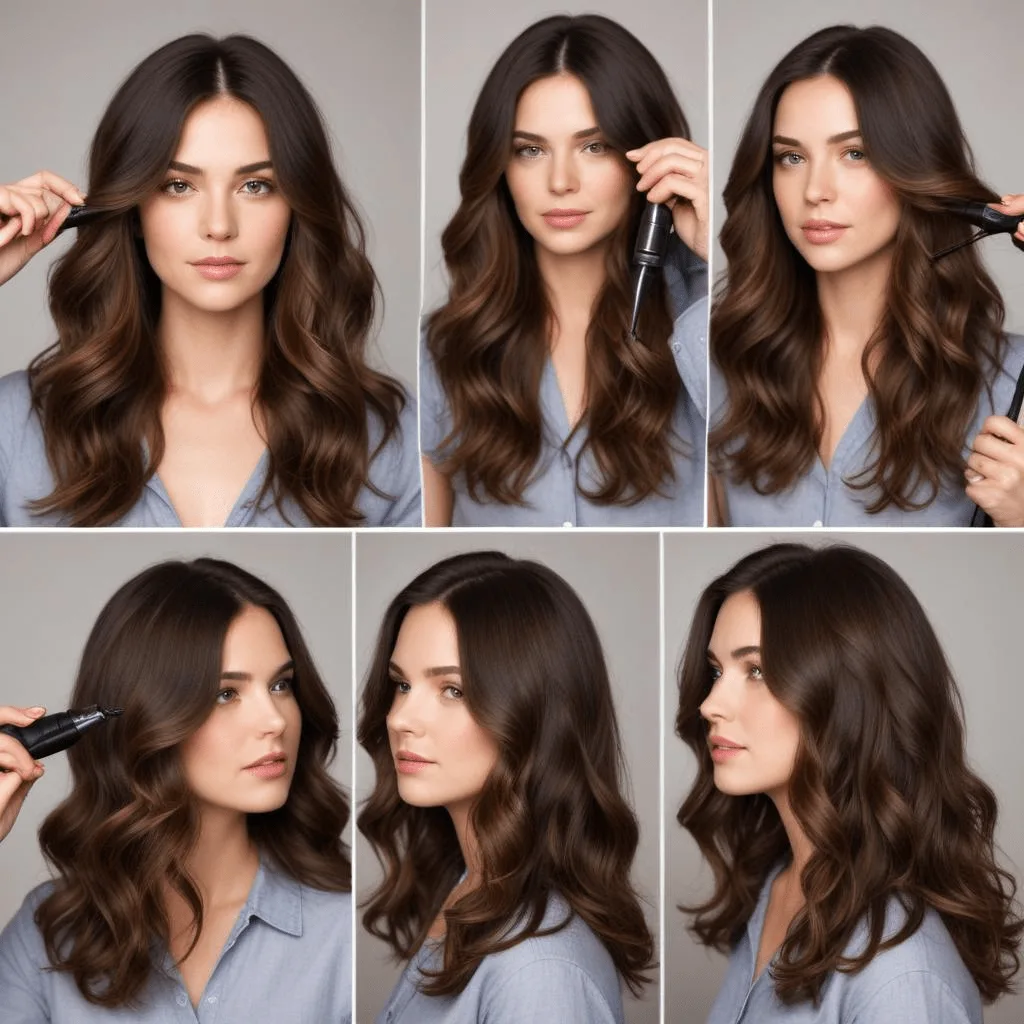
Weekend Bouncy Blowout
- Heat protectant.
- Large round brush, alternating directions for multidimensional movement.
Evening Glam Waves
- Curl 1.25-inch sections away from the face.
- Loosen with fingers; finish with texturizing spray.
Troubleshooting Common Problems
- Layers look too thin? It may be over-layered — ask for “weight lines” next trim.
- Lost shape too quickly? You might need a slightly steeper angle in the cut.
- Uneven curls? You need layers cut curl-by-curl, not combed straight.
Myths, Busted
- Myth: “Layers thin the hair.”
Truth: Only if overdone; soft layering keeps fullness. - Myth: “Not for curly hair.”
Truth: Curly soft long layers bring out the best in your texture. - Myth: “Takes too long to style.”
Truth: With the right cut, layers work with your natural fall.
Trending Variations for 2025
- Soft Long Layers + Balayage: Low-contrast color adds dimension.
- Curtain Bangs + Layers: Retro with modern softness.
- Gloss Finish: Makes layers shine like glass.
- Razor-Tipped Ends: For beachy, undone texture.
Extra FAQs
Q: Will my hair still look long with layers?
Yes — the goal is to maintain length while adding movement.
Q: Can I tie my hair back easily?
Absolutely — face layers won’t affect ponytail fullness.
Q: How long before I need a refresh?
8–12 weeks is ideal to keep shape, depending on growth rate.
Q: Do layers work with bangs?
Yes — especially with soft curtain or feathered bangs.
Key Takeaways
- Soft long layers = movement + length preservation + versatility.
- The right cut depends on face shape, texture, and styling habits.
- Maintenance is minimal with proper technique.
- The style is timeless because it flatters almost everyone.
Final Word
Soft long layers aren’t just a haircut — they’re a mood, a confidence boost, and a style investment. Whether your goal is volume, softness, or reshaping heavy hair, this cut works across textures and lifestyles.
Next time you’re in the salon chair, bring reference photos, talk openly with your stylist, and be ready to fall back in love with your hair.
